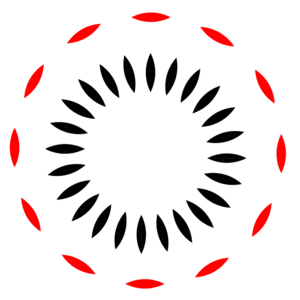Battle of Rhium facts for kids
Quick facts for kids Battle of Rhium |
|||||||
|---|---|---|---|---|---|---|---|
| Part of the Peloponnesian War | |||||||
|
|||||||
| Belligerents | |||||||
| Athens | Sparta, Corinth, and other members of the Peloponnesian League |
||||||
| Commanders and leaders | |||||||
| Phormio | Machaon, Isocrates, Agatharchidas, and others |
||||||
| Strength | |||||||
| 20 triremes | 47 triremes, some being used as transports | ||||||
| Casualties and losses | |||||||
| None | 12 ships captured, with most of their crews | ||||||
The Battle of Rhium (429 BC) was an important naval battle during the Peloponnesian War. It happened between the navy of Athens and a fleet from the Peloponnesian League. The Peloponnesian fleet had 47 ships called triremes. They were trying to cross the Gulf of Patras to attack a place called Acarnania. But the Athenian fleet, led by Phormio, attacked them during their crossing.
Many Peloponnesian ships were actually transport ships, not built for fighting. So, they formed a defensive circle. Phormio, with his skilled Athenian sailors, sailed his ships around the Peloponnesian circle. He kept getting closer, forcing their ships to bump into each other and tangle their oars. Then, the Athenians suddenly attacked. They completely defeated the Peloponnesians and captured 12 of their ships.
Contents
Why the Battle Happened
The summer of 429 BC saw a big attack by the Peloponnesian League in northwestern Greece. The Spartans and their allies wanted to defeat several cities that were friends with Athens. These cities included Acarnania, Zacynthus, and Cephallenia. They also hoped to capture the Athenian naval base at Naupactus.
The Spartan commander, Cnemus, was in charge of this plan. He set out with 1,000 hoplites (soldiers) from Sparta. He managed to cross the Corinthian Gulf without the Athenian fleet noticing. Cnemus then joined up with 2,000 more troops from allied states. Together, they moved to attack the Acarnanian city of Stratus. The people of Acarnania asked Phormio for help. But he decided to stay at Naupactus to protect it.
Meanwhile, the Peloponnesian fleet was supposed to carry troops to the southern coast of Acarnania. This would stop the people there from helping their friends inland. As the Peloponnesian ships moved west along the south coast of the Gulf of Corinth, the Athenian fleet followed them on the northern shore. The Peloponnesians had 47 ships, and they weren't too worried about the 20 Athenian ships across the gulf.
However, they tried to sneak through a narrow passage at night. This passage was between Rhium and Cape Antirrhium. They hoped to get away from the Athenians. But their trick didn't work. The Athenians saw them moving and chased them. They caught the Peloponnesians in the open water of the Gulf of Patras.
The Battle Begins
Even though the Peloponnesian fleet had more ships than the Athenians, many of their ships were not ready for fighting. They were set up to carry soldiers and supplies. So, when the Athenian fleet got close, the Peloponnesian commanders ordered their 47 triremes to form a circle. Their ships' front ends (prows) faced outwards for defense. In the middle of the circle, they put their smaller ships and their five fastest triremes. These fast ships were meant to fill any gaps that might open in the circle.
Phormio decided to use a very risky and unusual plan to attack this formation. He led his ships in a line, circling tighter and tighter around the Peloponnesian ships. Sometimes, he would quickly dart inwards to push the defending ships even closer together. This plan was dangerous for the Athenians. Any Peloponnesian ship could have quickly moved forward and rammed an Athenian ship from the side. But no such attack happened. The Peloponnesian ships were forced closer and closer together.
Phormio's Clever Plan
Phormio knew a lot about the local weather. He knew that a strong wind usually blew out of the gulf around dawn. He expected this wind to cause big problems for the less experienced Peloponnesian sailors. But he knew his own experienced crews would handle it just fine. So, he waited for the wind to start blowing before he attacked.
Just as he expected, when the wind picked up, the Peloponnesian ships were pushed even closer together. There was a lot of confusion in their circle. Sailors were shouting, oars got tangled between ships, and crews tried to push other ships away with poles. At this exact moment, the Athenians rushed in to attack.
The Peloponnesian fleet was immediately defeated. As they tried to escape to the southern shore, the pursuing Athenians captured 12 of their ships, along with their crews.
What Happened Next
The Peloponnesian fleet went back to Cyllene. There, they met up with Cnemus, who was also retreating after being defeated by the people of Stratus. These two defeats were very embarrassing for Cnemus and for the Spartans in general. Their first attempt to attack by sea had ended badly.
However, this victory did not stop the Peloponnesian attacks in the Gulf. Soon after, the Spartans managed to gather a much larger fleet. This new fleet had 77 triremes. Athens, meanwhile, sent 20 more ships to help Phormio. But these ships took a longer route through Crete. So, Phormio's original 20 ships had to fight on their own again. They barely managed to keep Athens in control of the gulf at the Battle of Naupactus.
Images for kids



